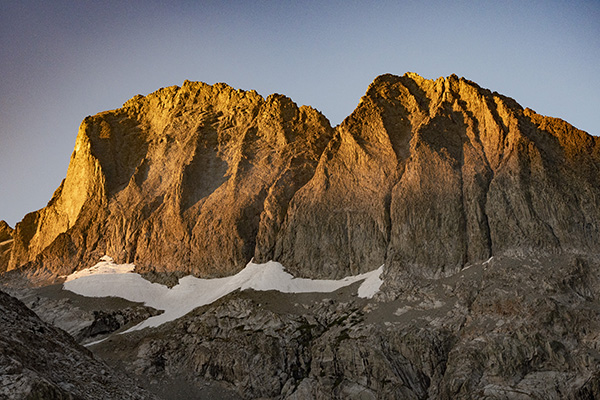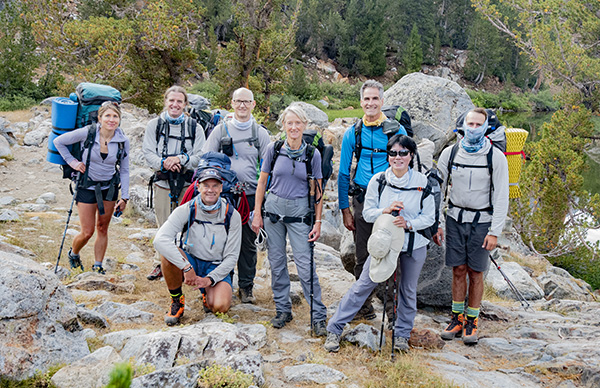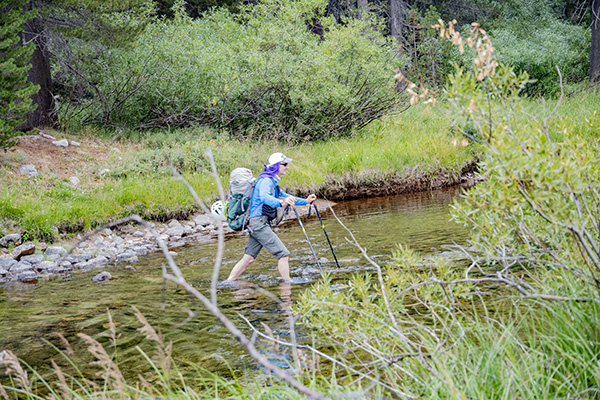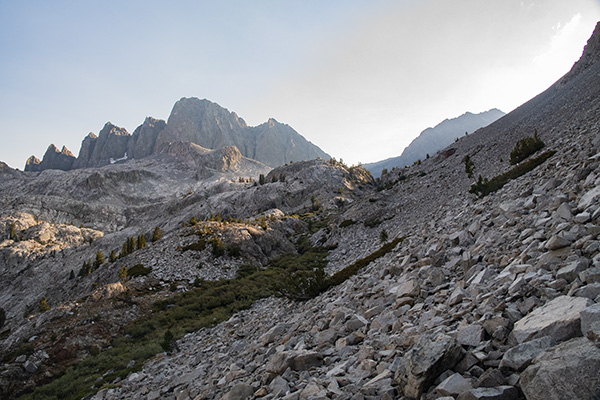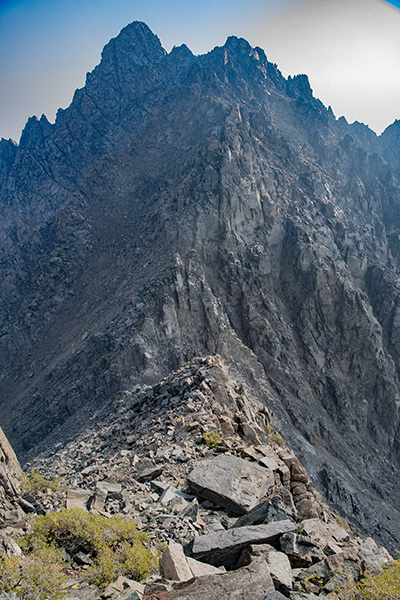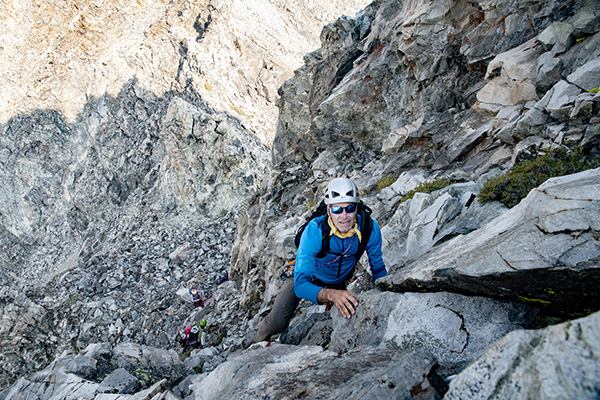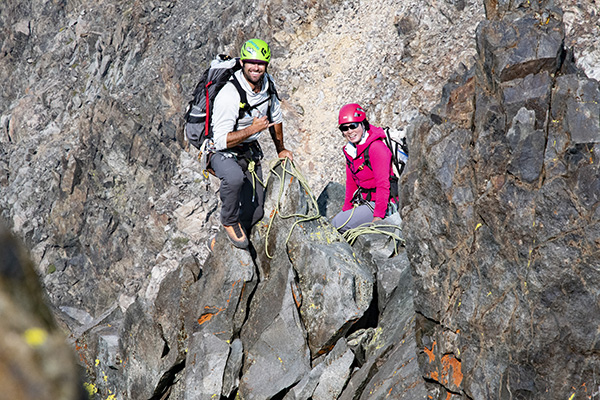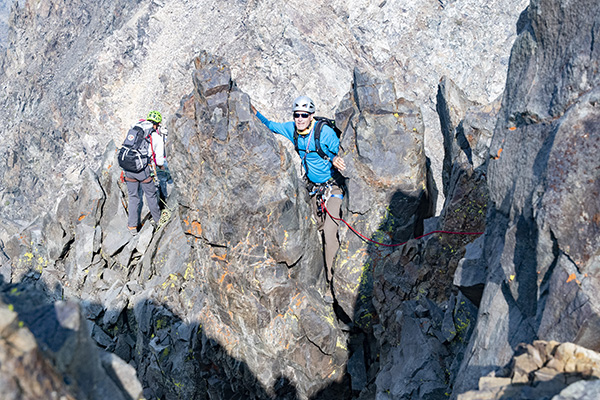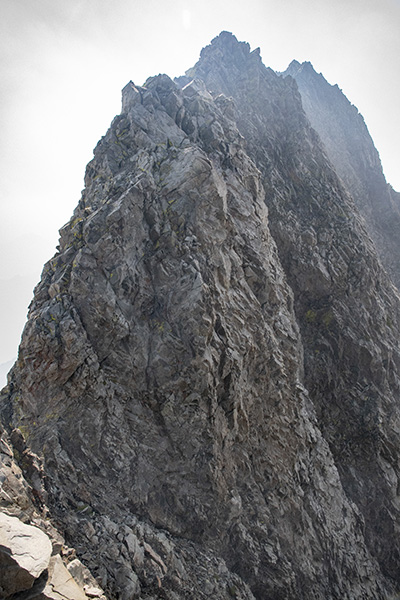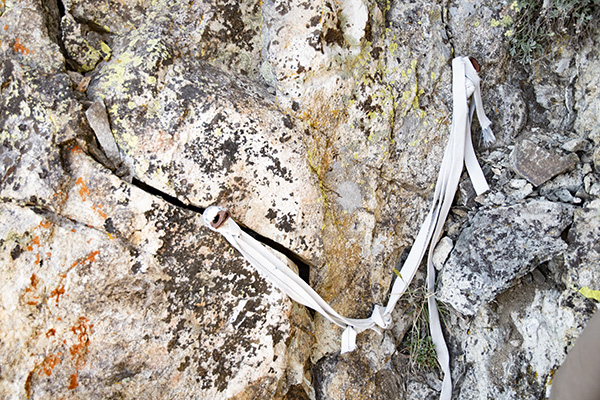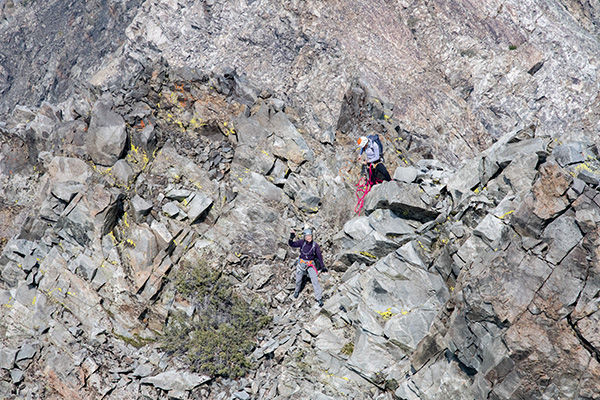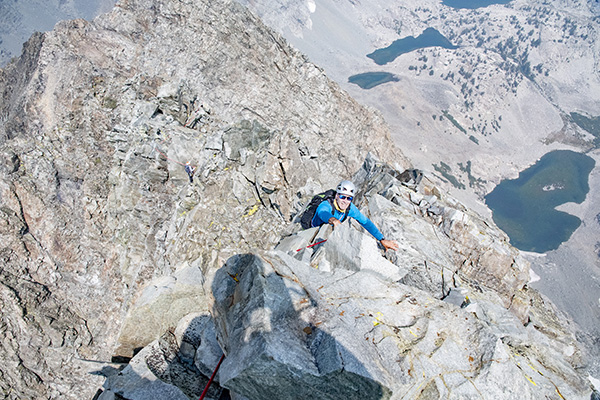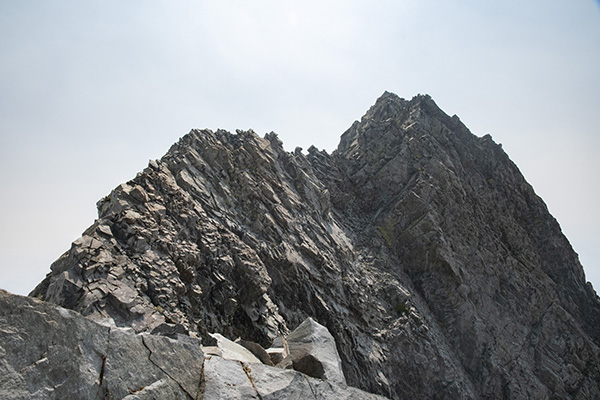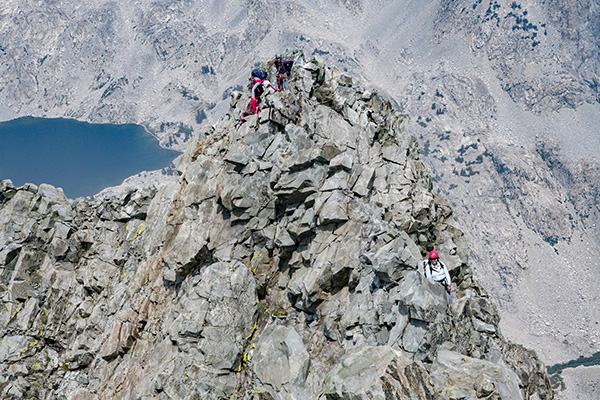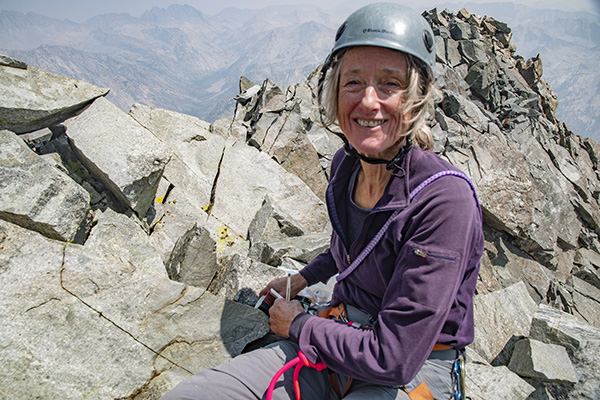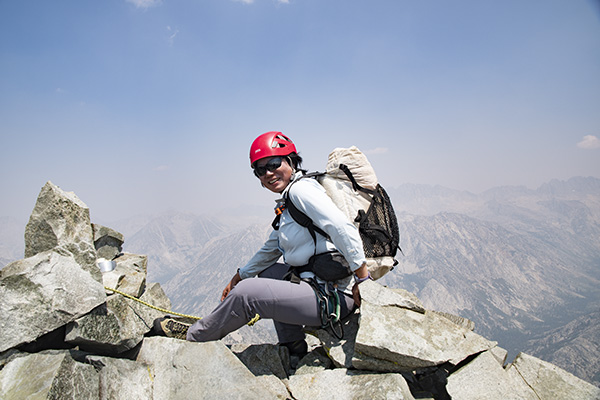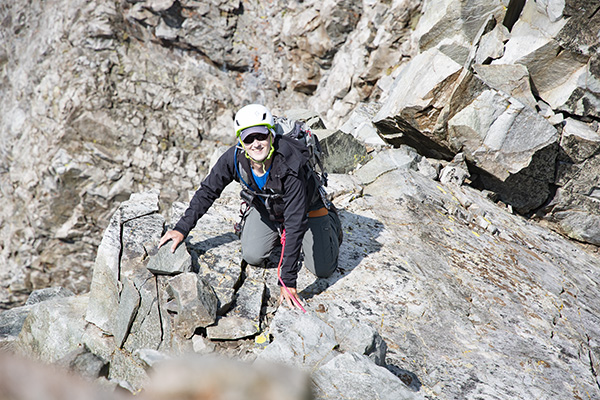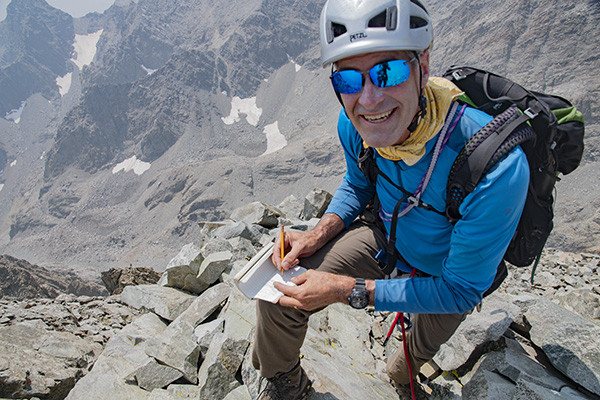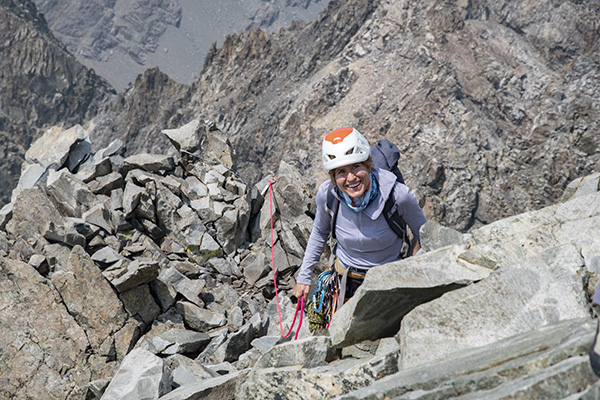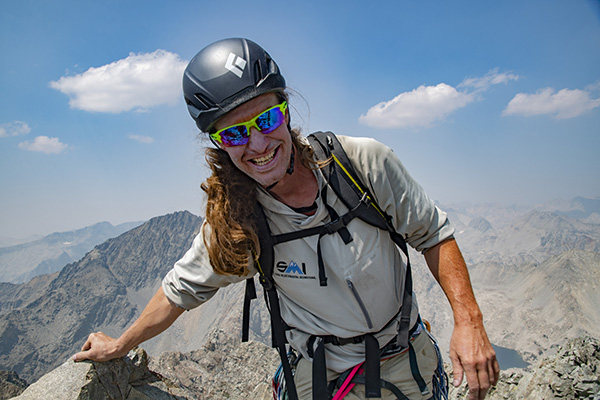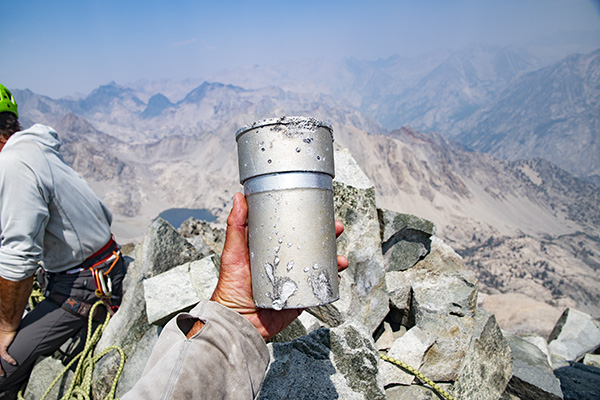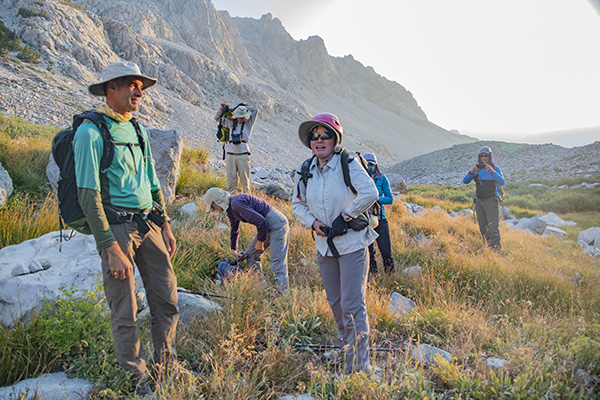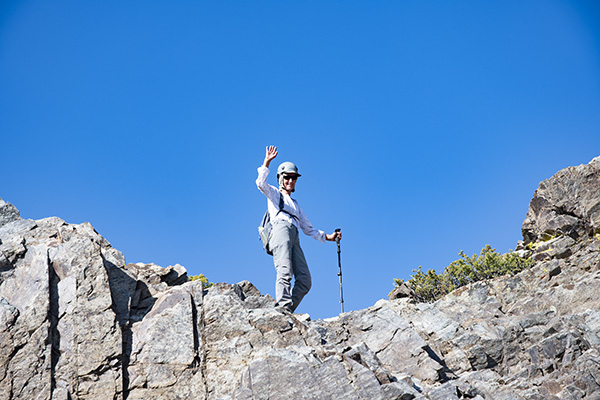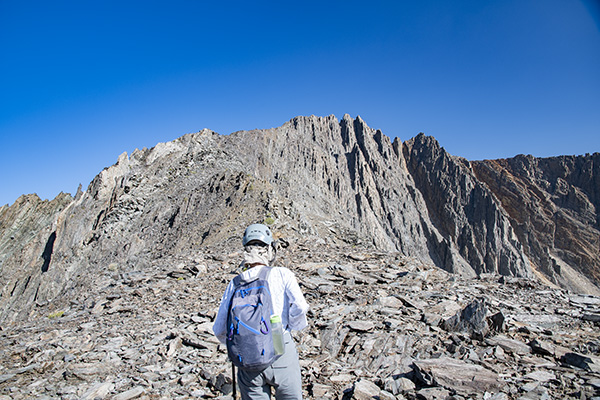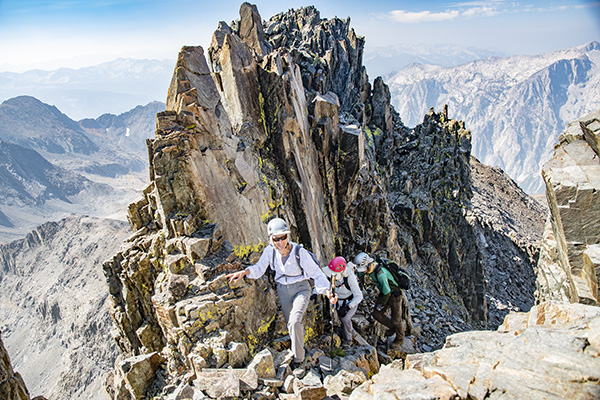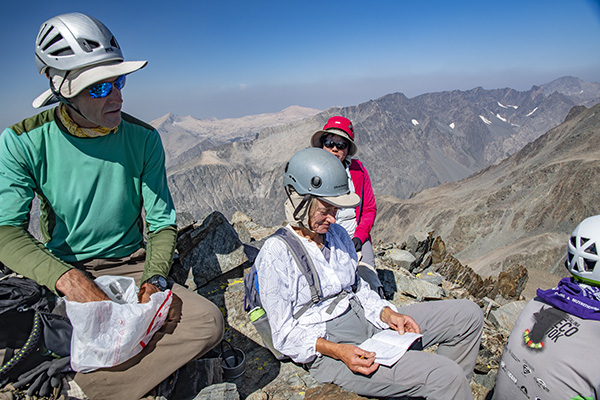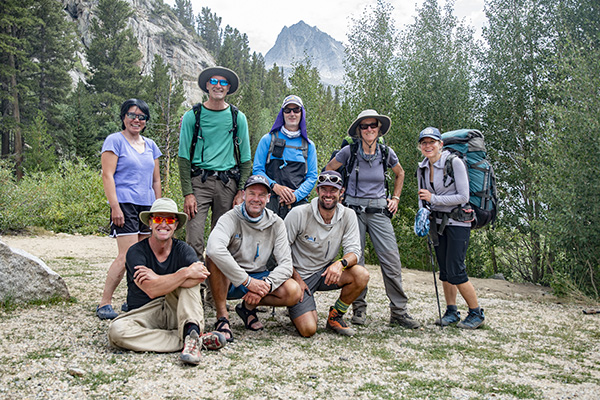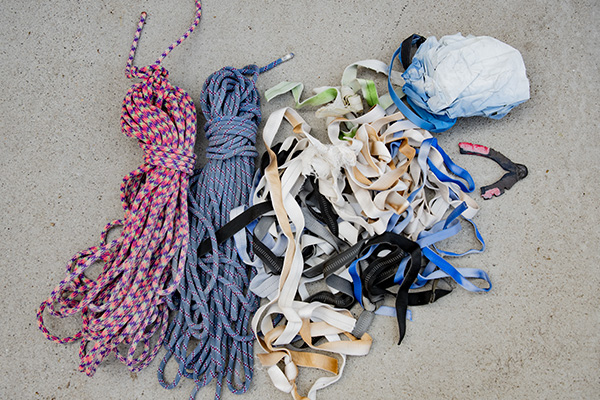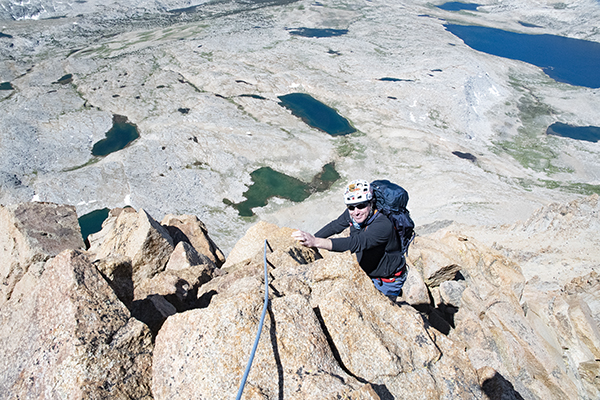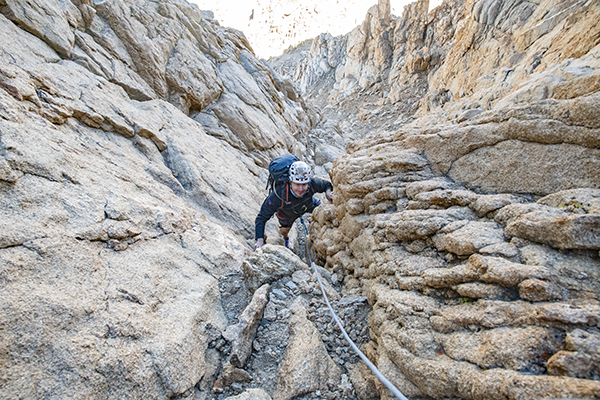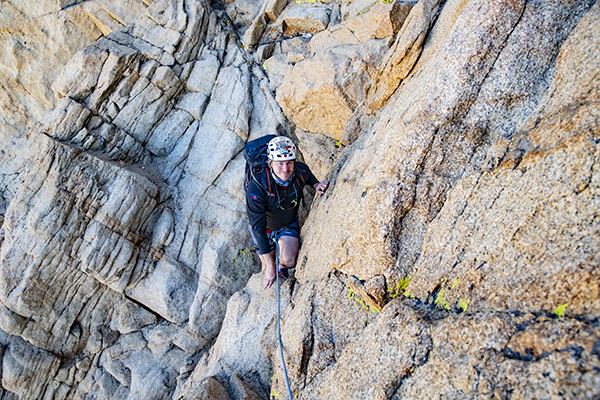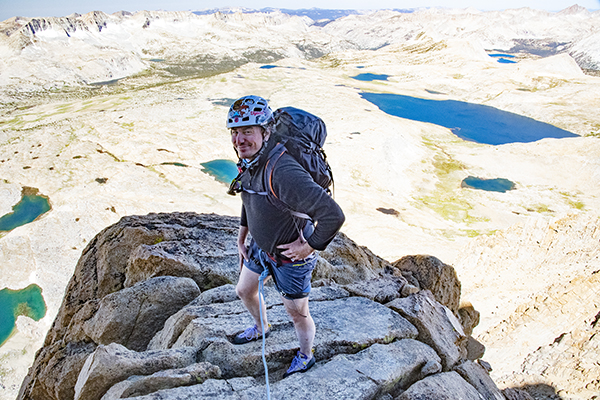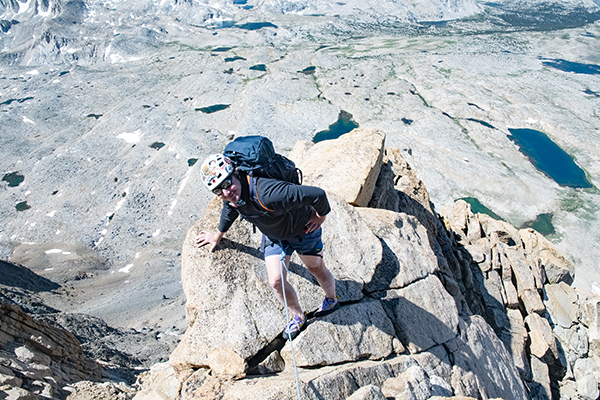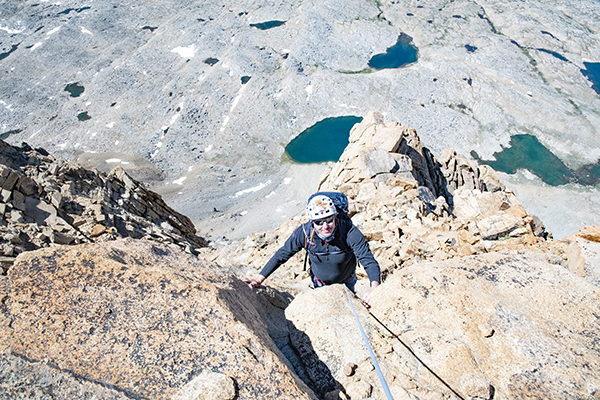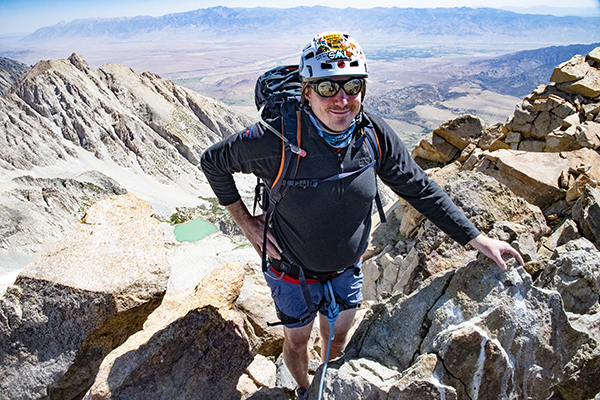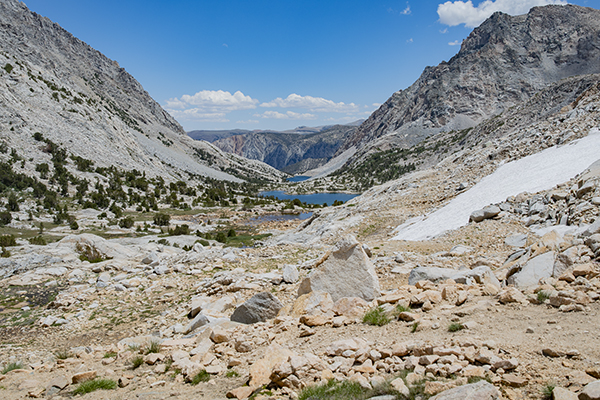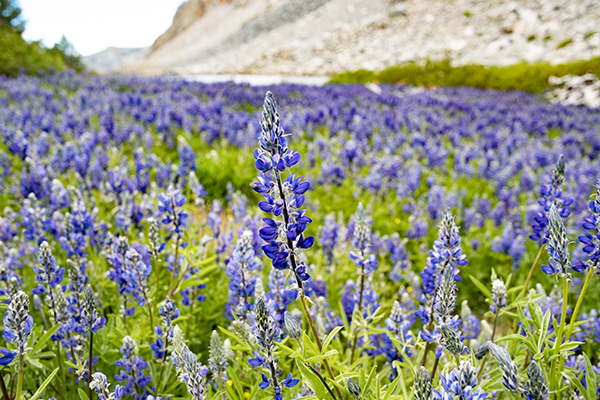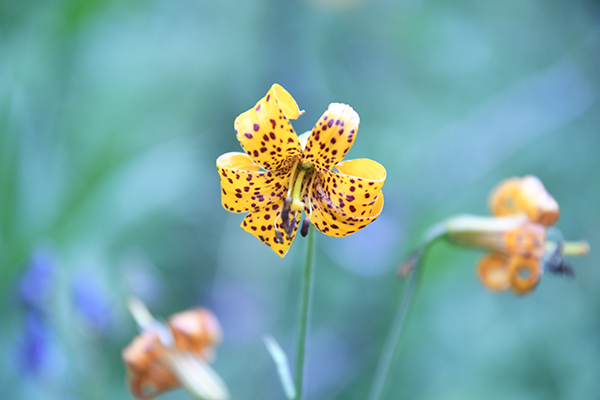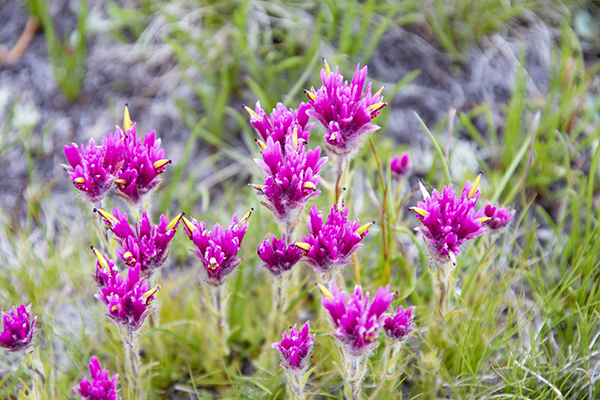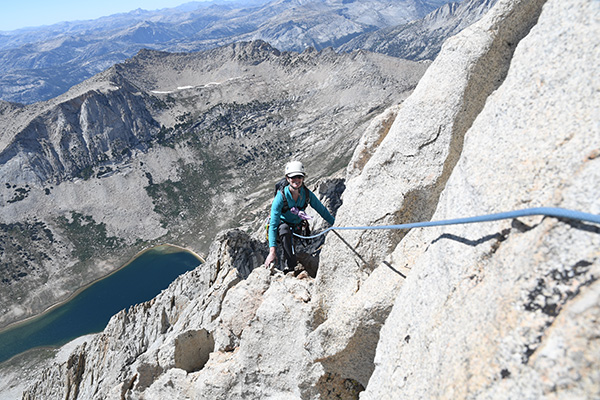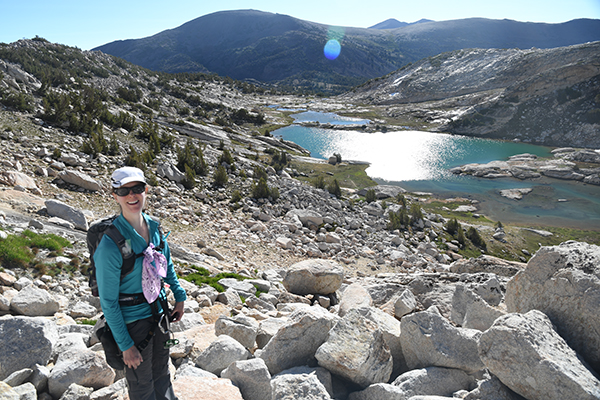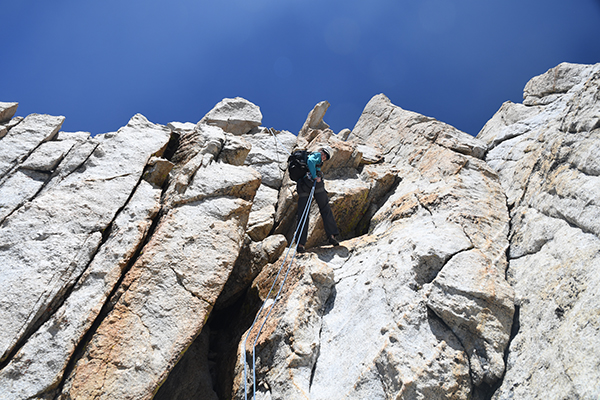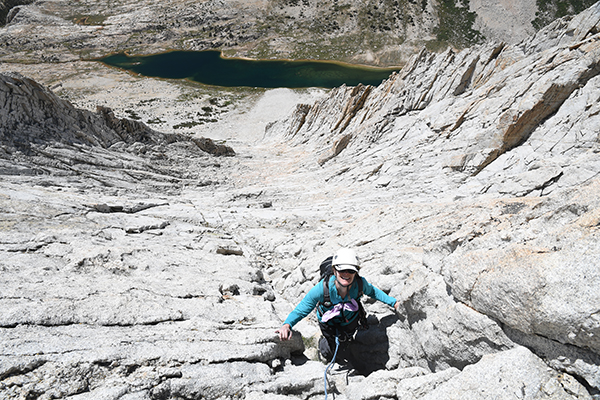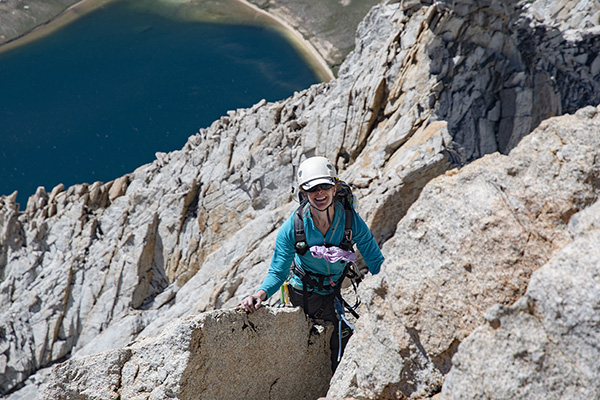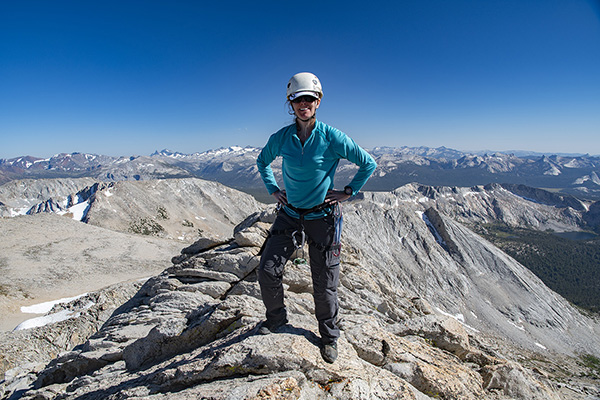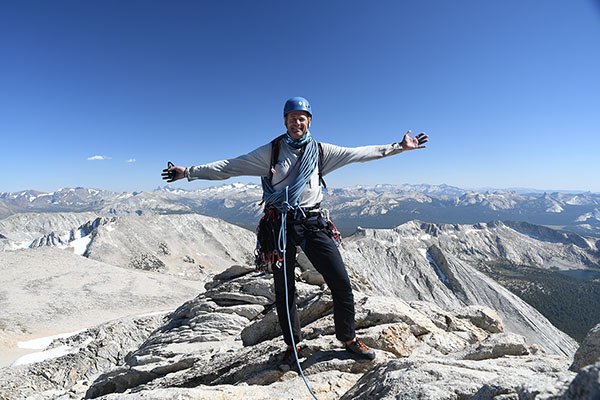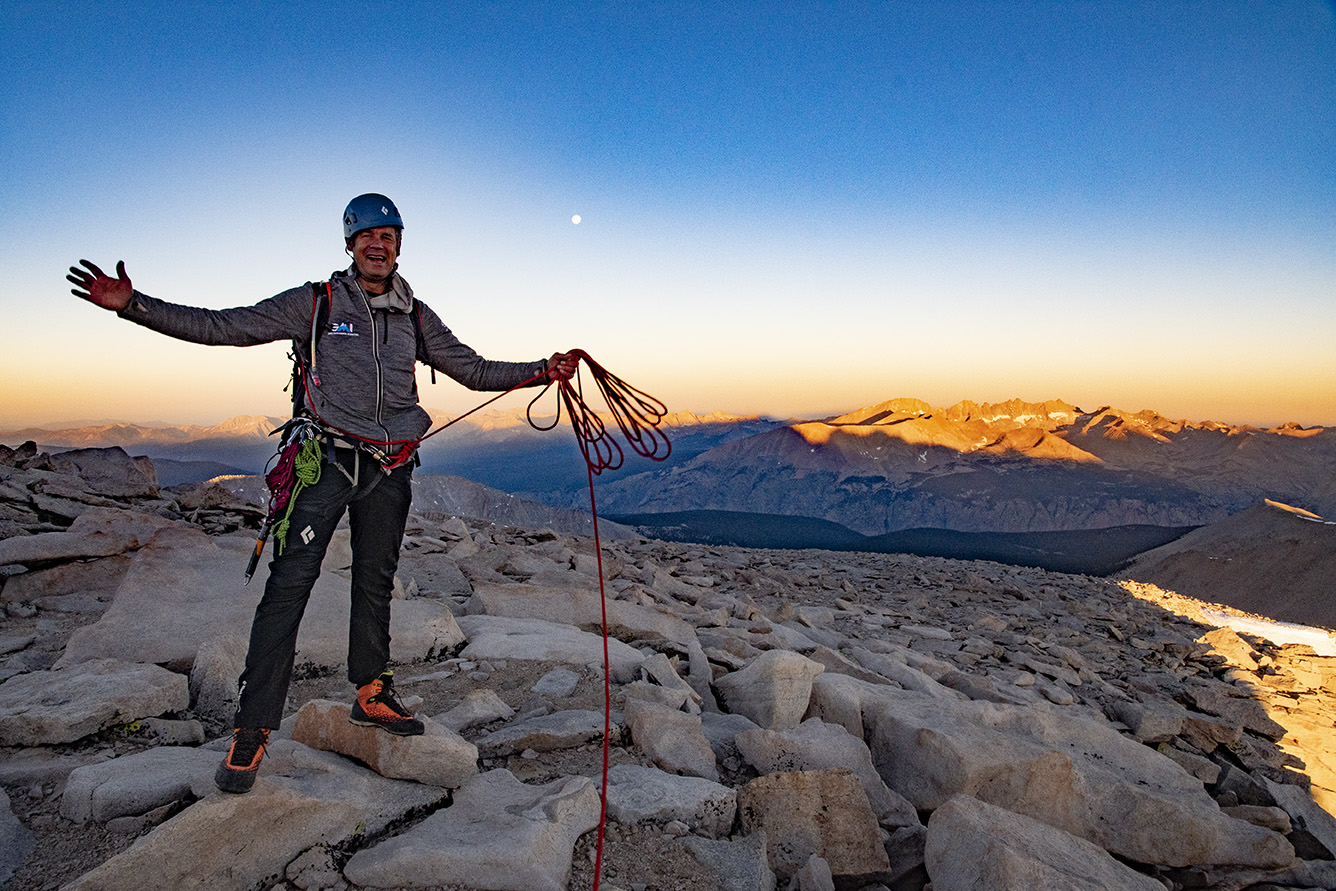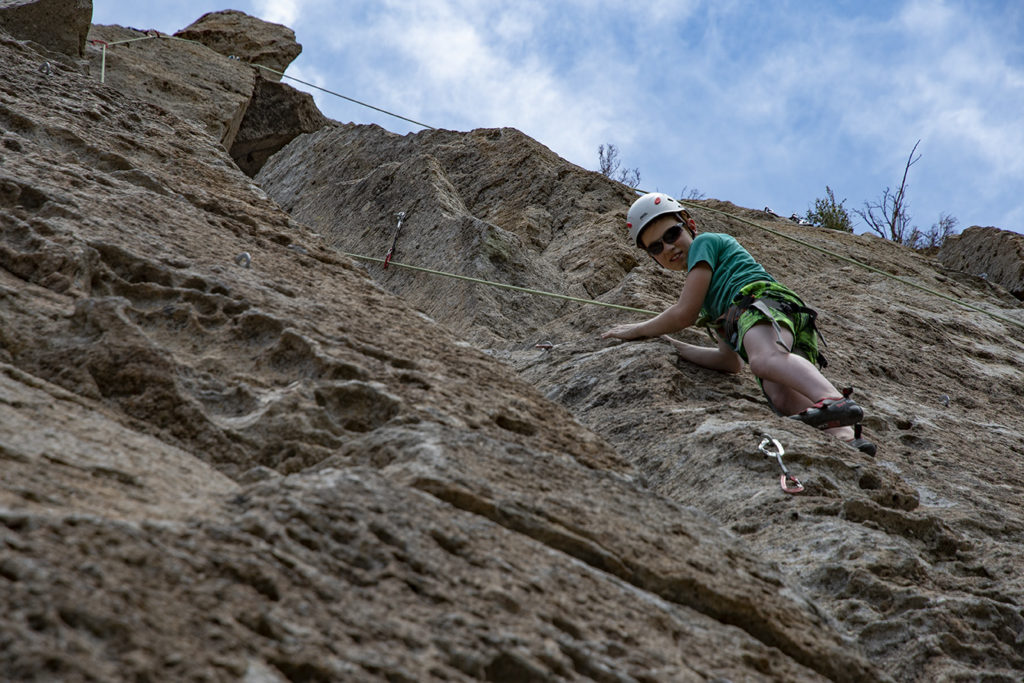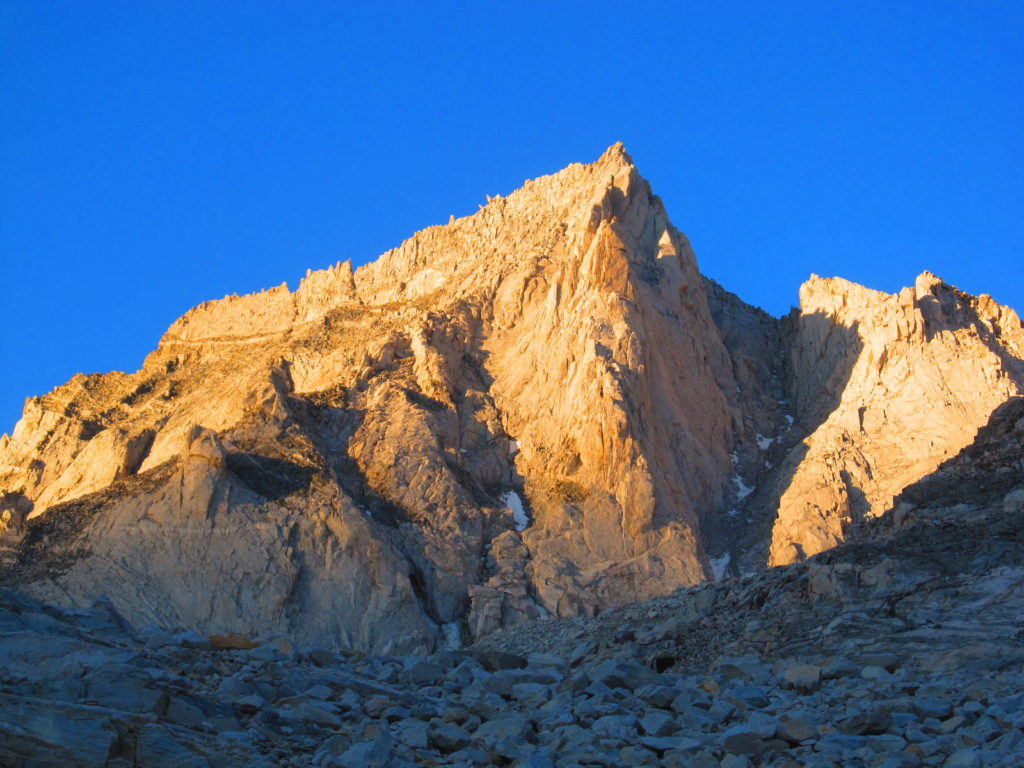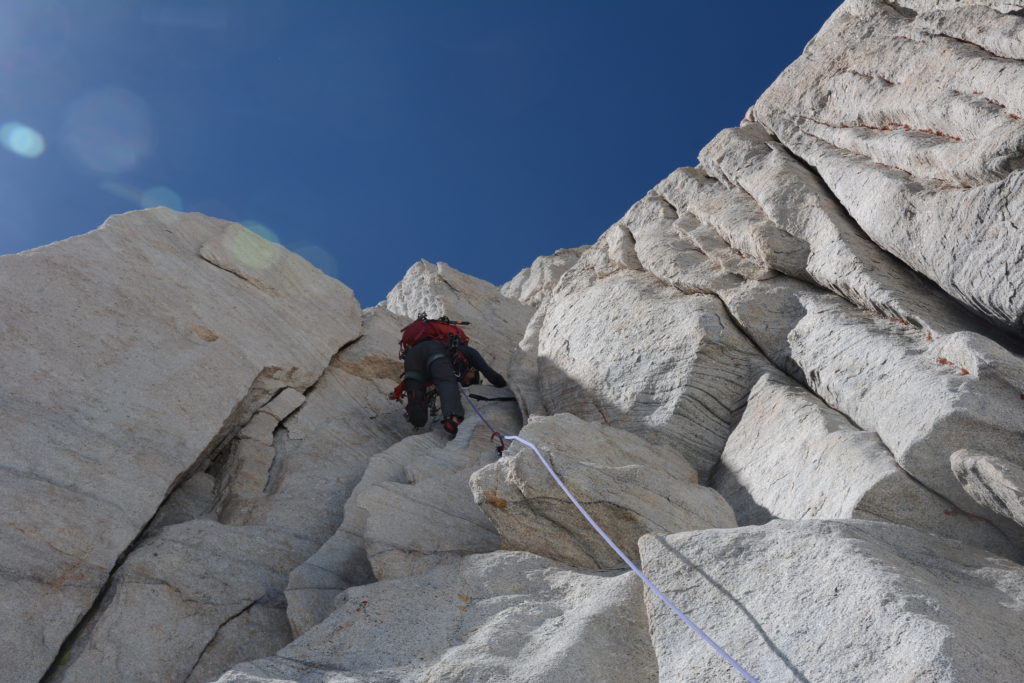
The Lost Arrow Spire is the needle protruding out of the face to the right of Yosemite Falls.
This is a report of a climb of Yosemite’s Lost Arrow Spire as written by Kurt Wedberg.
On September 27-30 SMI founder Kurt Wedberg joined big wall veteran Skiy Detray and Amanda Fenn for a climb of this famous feature in Yosemite Valley. Amanda is a strong climber who spent this past summer expanding her resume and climbing skills into the alpine environment. Skiy is a veteran of 40+ big walls and served several summers on YOSAR, the Yosemite Search and Rescue. He spent most of this past summer in Pakistan on the Great Trango Tower (6,286 m/20,623 ft), a striking rock formation above the Baltoro Glacier in the Karakoram. He also has set speed records for ascents of routes in Yosemite. Shortly after our climb of the Lost Arrow Spire he did the first one day ascent of El Capitan’s Scorched Earth A4 5.8 in 22:28 and Tribal Rite A4 5.5 in 19:48. Needless to say his knowledge and depth of experience were a treat to glean from. It was a pleasure to share a rope with both Skiy and Amanda. To have the opportunity to share a 4-day climb of one of the most well known features in Yosemite was truly a privilege. The Lost Arrow gets its name from an Indian legend. The story of the Lost Arrow is included at the bottom of the photo essay.
Below is a short photo essay of our climb. The entire photo galleries from all three team member’s cameras can be found here:
Amanda’s Lost Arrow Spire Pictures
Kurt’s Lost Arrow Spire Pictures
Skiy’s Lost Arrow Spire Pictures

Skiy and Amanda with haul bags loaded and ready for the approach.

Crossing the creek below Yosemite Falls on the approach to the Lost Arrow Spire.

The Lost Arrow Spire directly above with Yosemite Falls on the left.

Skiy ascending up pitch #1.

Amanda leading pitch #2.

Skiy leading the wide "off width" on pitch #3.

Amanda and a typical anchor station on day 1.

After dinner bedded down for the night on a small ledge four pitches up.

The morning sunlight creating a rainbow on Yosemite Falls.

Kurt leading pitch #5 on the morning of day 2.

Our goal tonight is the upper tree. Kurt is leading a pitch in the lower right of this photo.

Amanda taking off on the lead for pitch #6.

Skiy and our haul bags at a belay station.

Skiy taking off on a lead with our destination tree getting closer.

Amanda high up leading on pitch #8.

Skiy on the morning of day 3 relaxing on the ledge we slept on the night before.

Amanda leading a pitch on day 3.

Amanda high up on a lead with her gear she placed showing her line of ascent.

Anchored off and bedded down after dinner on a small ledge at the end of day 3.

The warming rays of the morning sun made for a peaceful morning on day 4 with Yosemite Valley far below.

Skiy and Amanda from "the notch" where the Lost Arrow Spire separates from the main wall. We will climb two more pitches to the top of the pinnacle then do a Tyrolean Traverse to get back to the main face.

Skiy hamming it up on pitch 14 on a beautiful fall morning in Yosemite.

The view of Kurt's feet looking down from the middle of pitch #14.

Amanda taking off to lead the final pitch of climbing.

Skiy and Amanda at the top of the Lost Arrow Spire.

Now we have to traverse approximately 140' on a rope to get to the main wall and finish the climb.

Skiy removing old UV damaged webbing on the anchor we would use for the traverse.

Kurt securing new webbing for the anchor.

Our anchored ropes leading off over the expanse. We had a friend anchor these ropes to the main face a couple days before we arrived.

Skiy volunteered to be the first to test our anchor system.

Skiy nearing half way on the traverse.

Amanda's turn. Skiy is just to the left of Amanda's head with a perfect view of all the action.

Wind picked up in the afternoon adding to the excitement as Amanda traversed.

View looking down in the middle of the traverse.

The final bit to ascend to finish the climb.

Kurt on the Tyrolean Traverse. Photo by Skiy Detray.

In addition to fixing ropes we were left with a little present to celebrate out climb!

After a good night's sleep it was time to hike down. We loaded our haul bags and descended down the Yosemite Falls trail.

Loading heavy haul bags on your back is a great squat workout.

On the descent we got a surprise and very welcomed visit from our good friends Trish, McKenzie, and Drew. They met us on the trail with fresh bananas, hot breakfast burritos, and EMPTY PACKS!!

Three amigos with our route behind.
THE LEGEND OF THE LOST ARROW
Kos-su-kah, a young chief of the Ah-wah-nee-chees, smiled upon a maiden, Tee-hee-nay. Kos-su-kah was tall and strong and brave. Among all the sons of Ah-wah-nee there was none so keen of sight, so swift of foot, or so skilled in the use of the bow and the arts of the chase. Tee-hee-nay was the fairest and most beautiful of all the fair daughters of Ah-wah-nee. She was tall and slender as the fir, and as graceful and supple as the stem of the azalea. Her hands and feet were small and beautifully shaped, her silken hair was black as a moonless night and fell in a cloud to her knees. Her eyes were luminous pools of light, and her voice was liquid in its sweetness. Her laugh was like the musical tinkling of the brook, and she was good as she was beautiful.
Tee-hee-nay smiled upon the handsome Kos-su-kah, thereby confessing her love for him, and nothing remained but the formal presentation, by Kos-su-kah, of suitable gifts to her parents, and the preparation of a feast to celebrate their wedding. Kos-su-kah’s suit was approved by the parents of Tee-hee-nay and the lovers were filled with joy. They began preparations immediately for a royal wedding feast. To do this Tee-hee-nay, assisted by the maidens of the tribe, would gather acorns and prepare the acorn bread and mush, collect grass seeds, wild fruits and edible roots; while Kos-su-kah should gather about him the best hunters of his tribe and participate in a big., hunt on the high mountains that there might be an abundance of meat for the feast, to which the entire tribe would be invited.
Before saying their good-byes it was agreed between them that at sunset Kos-su-kah should go to the column of rock which stands just to the east of Cho-lak (Yosemite Fall), and from there launch from his strong bow into the Valley an arrow, bearing on its shaft grouse feathers corresponding in number to the deer that had fallen before the skill of himself and his companions. That she might mark the flight of the arrow and the spot of its falling, and thus be the first to carry news of the success of the hunt to her tribe, Tee-hee-nay was to go at sunset to the base of the cliff and there watch for the signal.
After a most successful hunt, while his companions were making camp for the night, and preparing their game for transportation down to the Valley, Kos-su-kah made his way to the point agreed upon, prepared the signal arrow, and was just ready to send it on its mission into the Valley, when the cliff’s edge on which he was standing, gave way, carrying him with it and hurling him to his death on the rocks below.
After the seemingly endless day of waiting, Tee-hee-nay made her way to the appointed spot, and as the sun went down behind the cliffs, stood straining her eyes up to the heights, hoping to catch a glimpse of the manly form of her lover. But when night had settled his dusky mantle over the Valley, Kos-su-kah had failed to appear, and no signal arrow had winged its way down from the cliff above. Thinking that the chase had led him farther afield than they had anticipated, that he had been unable to reach the cliff before darkness, and, knowing that his signal arrow would not be seen, he was, even now, making his way down the boulder strewn trail of Indian Canyon to deliver in person his message, she bound up the trail hoping to meet him. Over rocks and fallen trees from ledge to ledge, over precipices where a misstep meant certain death she hurried until at last she gained the foot of the cliff at a point from which, should he come, she could not miss him. There, through the long hours of the night, she waited and listened, longing for the welcome sound of his footsteps or his dear voice, and sending winging through the dark void of the night sobbing, passionate prayers to The Great Spirit for the safety of her loved one.
But when the first rosy fingers of dawn lit up the eastern sky and brought no sight of her lover, she sprang like a deer up the steep trail to the top of the cliff, and hurried to the spot from which the signal was to have been given. She called to Kos-su-kah, but only the echo of her voice came back in answer to her yearning cry. Reaching at last the edge of the cliff she came to the point from which a large portion had but recently fallen away. With sobbing breath and a heart numb with an awful certainty, she forced herself to look over the edge, and saw lying far below, the blood-stained lifeless body of her lover.
Stunned by the terrible grief of her loss Tee-hee-nay built, on the top of the cliff, a signal fire and summoned help from the tribe below. The heavy, lagging hours of waiting dragged away, and at last the asked for help arrived. Preparations were at once made for the recovery of the lifeless body of Kos-su-kah. A rope was fashioned from the trunks of young tamaracks by lashing them together with the thongs of the deer that were to have furnished the meat for the wedding feast. When this was finished a young chief prepared to descend, but Tee-hee-nay pushed him aside. She herself must be the first to reach her lover, her hands the ones to perform this sad service. The sympathetic braves lowered her gently down the cliff until she stood beside Kos-su-kah’s battered body. After gently kissing his cold, unresponsive lips she unwound from around her waist the thongs of deerskin and bound his body firmly to the rope, then watched in loving anxiety while the braves gently raised him to the cliff top. The rope was again lowered and Tee-hee-nay was drawn up to the side of her dead lover. Then she, who up to this time had been so brave, gave way to a passionate storm of grief. Throwing herself across the body of her loved one she entreated him to speak to her, sobbing prayers to The Great Spirit for the return of her dead. After a while her cries ceased and she grew quiet. When gentle hands stooped to lift her she fell back lifeless. She had died of a broken heart and her gentle spirit had winged its way to join her lover’s in El-o-win, the spirit land beyond the setting sun.
Reverent hands brought the two bodies of the lovers, now reunited in death, down into the Valley, placed them side by side upon the funeral pyre, and scattered their loved. The signal arrow was never found, having been spirited away by the reunited lovers to El-o-win as a memento of their unfaltering love. And in memory of the beautiful maiden and the noble chief, the slender spire of granite, still standing there near the spot where Kos-su-kah’s body was found, has ever since been known to the sons and daughters of Ah-wah-nee, as Hum-mo, or the lost arrow.
